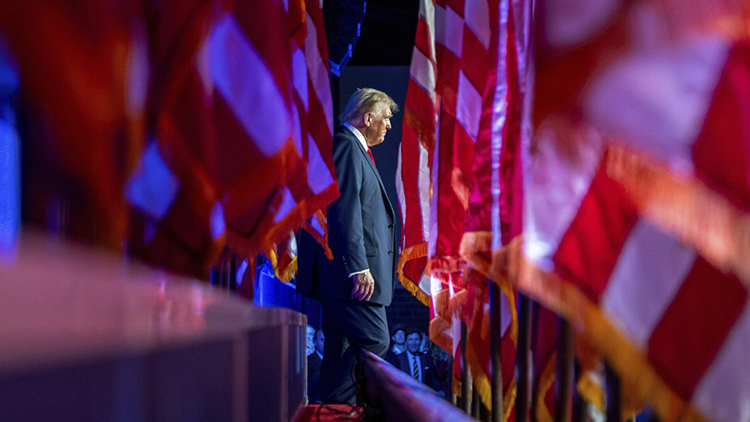As the political landscape in the United States is shifting with the resurgence of Donald Trump for a second presidential term, significant concerns are high among climate scientists, environmental activists, and energy market analysts. Many experts predict a rollback of climate policy, a renewed emphasis on the interests of fossil fuel companies, and a pivot away from renewable energy initiatives that gained momentum during the previous administration of Joe Biden. However, this expected trajectory might not be as straightforward, as counteracting forces—such as the European Union’s climate policies and a growing energy transition movement—could mitigate some of the expected consequences of a Trump presidency on energy and climate efforts.
A Reversal of Climate Gains
As Trump is retaking the office, the U.S. might witness a retreat in its climate ambitions. During his first term, Trump implemented an “America First” energy agenda that favored fossil fuel production over renewable energy. Experts anticipate that a second term would be characterized by aggressive dismantling of the regulations and policies established under previous administrations. Measures such as clean energy tax breaks, pollution controls, and commitments to international climate agreements like the Paris Accord may lie in the crosshairs of the Trump administration.
A significant component of Trump’s platform involves increasing oil and gas extraction across federally owned lands and waters, which includes the controversial Arctic National Wildlife Refuge. His appointee for the Interior Department, which oversees vast areas ripe for energy exploitation, has indicated intentions to halt the Biden administration’s limitations on fossil fuel development. This push for extraction could exacerbate climate change by releasing more greenhouse gases into the atmosphere, particularly methane—a potent climate pollutant linked to natural gas extraction and transport.
Trump’s administration is likely to encourage the expansion of liquefied natural gas (LNG) infrastructure, leading to an increased production of fossil fuels. This action not only poses an immediate threat to domestic climate initiatives but risks establishing the U.S. as the world’s largest LNG exporter, potentially locking in harmful emissions for decades. Additionally, initiatives intended to target disadvantaged communities, such as the Biden administration’s Justice40 initiative, may face elimination, further compromising social equity in climate action.
Internal Pushback and Resilience
Despite Trump’s expected policy shifts, evidence suggests that the clean energy transition in the U.S. may not be halted entirely. The costs of renewable technologies continue to fall, and there is increasing pressure from consumers and investors for companies to prioritize sustainability. This private sector drive for clean energy could create a significant counterbalance to the Trump administration’s pro-fossil fuel agenda.
Local and state-level initiatives on clean energy may persist regardless of federal policy direction. Leaders across the political spectrum recognize the economic opportunities inherent in clean energy development. During Trump’s previous term, investments ballooned in wind and solar sectors, demonstrating that economic growth and climate action can coexist. Dan Lashof of the World Resources Institute noted that state and local leaders remain dedicated to advancing climate solutions, independent of federal restrictions. This grassroots momentum can continue to drive innovation and investments in clean technology even in a less supportive federal environment.
The European Union’s Role
The geopolitical landscape also plays a crucial role in the future climate dynamics under Trump. If the U.S. retracts from its international climate commitments under Trump, the EU will become an essential player in global climate diplomacy. The potential backtracking of U.S. climate policy coinciding with the expected commitment to ambitious climate targets by the EU could lead to an even wider gap between the two regions on climate issues.
The EU has already announced plans to accelerate its own decarbonization goals and strengthen international alliances to promote ambitious emissions reduction pledges. While the U.S. may falter in its climate leadership, the EU could position itself as a pioneer in climate efforts, creating economic opportunities through green technologies. This leadership emphasizes that the transition towards clean energy is not solely dependent on U.S. policy; rather, it is a global imperative that various actors are pursuing with increasing urgency.
The Economic Landscape
An important aspect of Trump’s energy policy shift is the economic implications for the U.S. and global energy markets. If the U.S. succeeds in drastically increasing fossil fuel production as Trump intends, energy prices may see a notable decrease. This pricing adjustment could widen the energy gap between the U.S. and the EU, posing challenges to European industrial competitiveness, especially as the EU pushes for decarbonization.
However, such a scenario could also spur European nations to double down on their green transitions. The move towards clean energy not only addresses climate concerns but also presents an economic opportunity for the EU in the clean-tech export market. Accelerating this transition may ultimately become the only structural solution to high energy prices faced in Europe, as reliance on fossil fuels continues to become less viable from an economic and environmental standpoint.
Trump’s return to the presidency is likely to stall the U.S. climate efforts, but it will not stop the broader shift towards sustainable energy sources. Market dynamics, state-level actions, and international commitment to addressing climate change can provide resilience against the potential setbacks caused by federal policies aimed at bolstering fossil fuel production. The ongoing global transition towards a sustainable energy future is an intricate process that may continue to unfold, despite political challenges at the top levels of the U.S. government.







